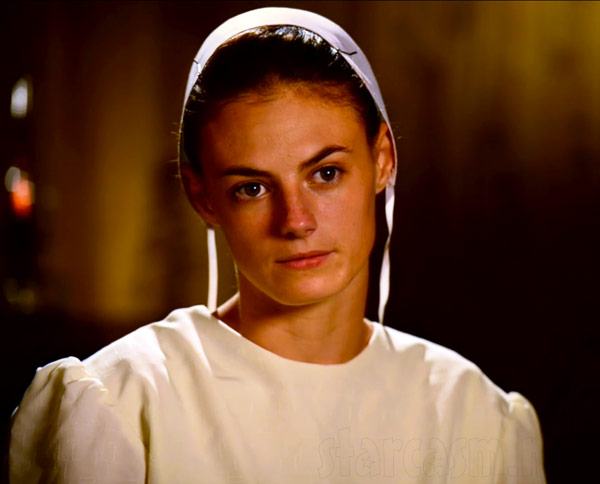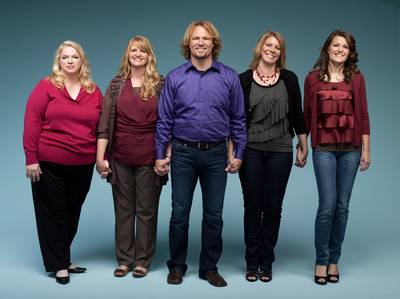Note: This may be the least academic post I?ve ever written. It?s mostly a collection of my random thoughts on clothing, modesty, and religious communities. Read it with that in mind.
On Sunday night, as I was flipping through TV channels, I came across Breaking Amish, a TLC reality show about young men and women who have decided to leave the Amish. There has been significant controversy surrounding the show. Although TLC claimed that all of the young men and women it was filming had been a part of the Amish when it began production, evidence emerged that they had frequented strip clubs, owned cell phones, and been involved in drunken parties. Websites like Jezebel accused the show of fabricating the lives of its participants, using makeup, clothes, and creative editing to make individuals who hadn?t been involved in the Amish community for years appear to be recent apostates. Perhaps the most interesting of their techniques was the clothes.
Like many reality TV shows, Breaking Amish has its participants reflect on recent events ? whether it be a night carousing on the town, a clandestine kiss, or, in this season, an unplanned pregnancy ? in a confessional booth. Although all of the show?s participants have donned jeans, tank tops, and trendy haircuts in an attempt to look ?English,? they are forced to appear in the confessional booth in their Amish clothing. Each time they go in, they leave behind their dresses, jeans with holes in them, and high heels for heavy overalls, conservative pastel dresses, and head coverings. Here is the transformation of one participant:


What is interesting about these images is the way that clothes are being used to mark identity. In redonning Amish clothing, the participants are made into Amish men and women again. The clothes are supposed to remind audience members that these refugees of a sort from a conservative religious community that wouldn?t allow them to follow their dreams to be a model, a clothing designer, or a pastry chef.
Breaking Amish isn?t TLC?s only reality TV show about conservative religious communities. It also hosts Sister Wives, a show about a polygamous Mormon family. Unlike the participants of Breaking Amish, however, the family in Sister Wives does not dress conservatively for interviews. Instead, their clothing is used to mark them as modern and active participants in society. The Brown family profiled in Sister Wives sees themselves as rejecting the behavior of Warren Jeffs and the fundamentalist Mormon compounds found in Nevada, Wyoming, Canada, and Utah, and their clothes are one way in which they demonstrate that.
They want us to compare the way that fundamentalist Mormons act and dress:

To the way that they have chosen to dress:

And see them as fundamentally different.
What I find interesting about this juxtaposition is the suggestion that the dress of the Sister Wives is modern while that of women involved in the FLDS community is not. Both are actually modern inventions. Before the raid on Short Creek, Arizona, in 1953, FLDS Mormons dressed in ways that were quite similar to other Americans. They wore the same types of dresses and pants as everyone else. It was only after the raid, in an attempt to mark themselves as distinct, that they began to wear the now-infamous prairie dresses. Significantly, they called this style of dress ?retrenchment? after the attempts of the Mormon community to reform their styles of dress in the nineteenth century. Nineteenth-century Mormons, however, would not have uniformly worn the dresses that members of the FLDS now don. They would have worn a wide variety of clothing, including dresses made of silk, linen coat smocks, and brown jacquard shawls (See Carma De Jong Anderson?s essay in Nearly Everything Imaginable for color plates and examples of what these look like).
Watching the TV shows and reading about the history of the prairie dress in FLDS communities has left me thinking about the role that clothing plays in religious identity. Here are few questions that came to me:
- There seems to be a movement among conservative religious groups to wear what we could consider traditional nineteenth century clothing. When did this start? Is the Amish tradition of wearing plain clothes recent? (I tried to find an answer to this but couldn?t)
- One of the issues that come up constantly on Breaking Amish is the difference between Mennonite and Amish clothing and customs. Some evangelical communities have adopted similar modesty codes as Mormons. These same communities tend to be virulently anti-Mormon. Do these groups influence each other?s styles of dress in any way? If so, is there any concern about it in communities where there are significant numbers of Mormons and evangelicals? (I am thinking of a small Baptist church in Provo here that spends an hour after church each week tracting Mormons.
- Do non-Mormons in predominantly Mormon communities wear more skimpy and outlandish clothing to mark themselves as non-Mormon? (My own anecdotal evidence would say ?yes? and ?no.? I made certain that I wore tank tops but they were always an inch thick and I never wore shorts above my knee till graduate school.)
“Is the Amish tradition of wearing plain clothes recent?”
No, their dress was already considered plain in the late 19th century. (See, for example, Donald B. Kraybill’s “The Riddle of Amish Culture”)
Comment by sar — September 11, 2013 @ 12:28 pm
I suppose that it was the straps on your tank tops that were an inch wide. If you wore tank tops that were an inch thick I will just sit here in quiet amazement.
I suspect, though, that the non-Mormons in predominantly Mormon communities don’t wear clothing that is much more skimpy than is worn by large numbers of people in predominantly non-Mormon communities. But I don’t have any evidence other than personal experience. Here in New York, a lot of women spend the hot months of the year baring large swaths of skin. It seems that the skimpiest dressed women in Mormon country look about the same.
Comment by Mark B. — September 11, 2013 @ 1:29 pm
I’d never thought much about those prairie dresses, but that’s an interesting thought. They don’t look remotely like any of the outfits I’ve seen in hundreds of 19th-century family pictures. I just glanced through some pictures from a St. George history and the FLDS costumes do kind of resemble 1870s work clothes; very casual, nothing a woman would normally wear to be photographed. What an interesting fashion choice.
Comment by Amy T — September 11, 2013 @ 3:19 pm
This is great, I had no idea the prairie dresses were a recent invention.
I watched a PBS documentary on the Amish yesterday and I wondered in reading your post: are these apostate Amish, ie did they make a baptismal covenant and then break it by leaving, or are these Amish that left during the decision-making process (ie Amish in culture but not officially part of the church?)? And on the Amish clothing styles, it’s been my understanding that when the world changed, the Amish stayed the same (the same way Hasidic Jews still wear the clothes of their forebears even though clothing styles have changed a lot since that was customary). But I could be wrong.
Comment by Saskia — September 12, 2013 @ 4:46 pm
mainstreamTV always edits so much out, they usually are 1 sided in how they show alternative cultures & spiritual beliefs
I dont understand why people wanna judge & single out the way some Mormons dress when Jews & Muslims also dress modestly, so its not like Mormons are the only ones doing it
Im just learning about morman ways on my own out of curiosity, so I don’t know everything. But I do know that Mormons didnt support slavery. So how can somebody judge Mormons when there are worse people in the world.
Comment by zaaina — September 13, 2013 @ 9:05 am